By Greg Abazorius
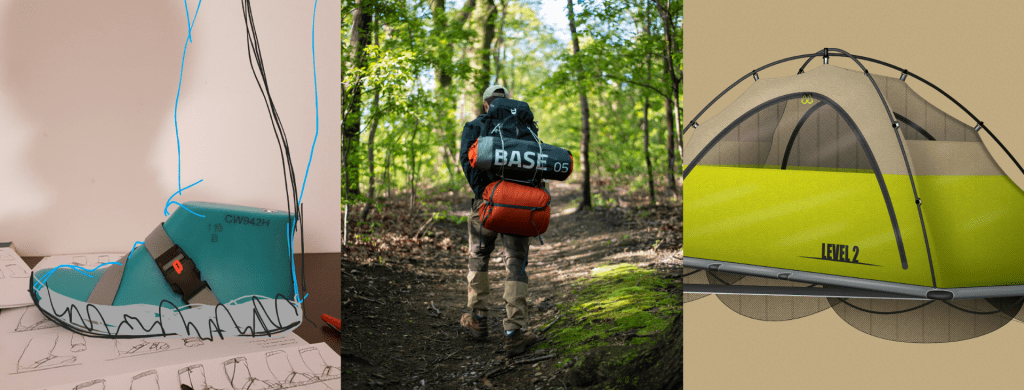
Rich Woessner has long considered himself an outdoors type. But lugging around heavy equipment during a minus 8-degree camping trip led him to think that there might be a better way. “It was hell,” he says with a laugh.
The trip, as well as a conversation with Assistant Professor of Industrial Design Derek Cascio, led him to investigate ultralight camping materials (those weighing two to seven pounds).
Nicole Nassif, by contrast, did not consider herself an outdoorsy person. A speedskater interested in winter activities, Nassif looked to racing when asked by Cascio to create a product that would appeal to outdoor aficionados. She found the Iditarod, a 938-mile sled dog race that stretches from Anchorage to Nome, Alaska, and set out to create better footwear for competitors.
Meanwhile, Sam Owens wanted to truly test his own design limits by creating a tent that could be suspended from trees. He would later call his process “intense and different,” and ambitious enough that it would not allow him time to create smaller prototypes. He would have to simply build it.
All three Industrial Design students succeeded in their quests, the end results—along with 13 other projects—showcased in a stunning Center for Engineering, Innovation and Sciences floor display that would look at home in stores like REI or L.L. Bean. This is how they did it.
***
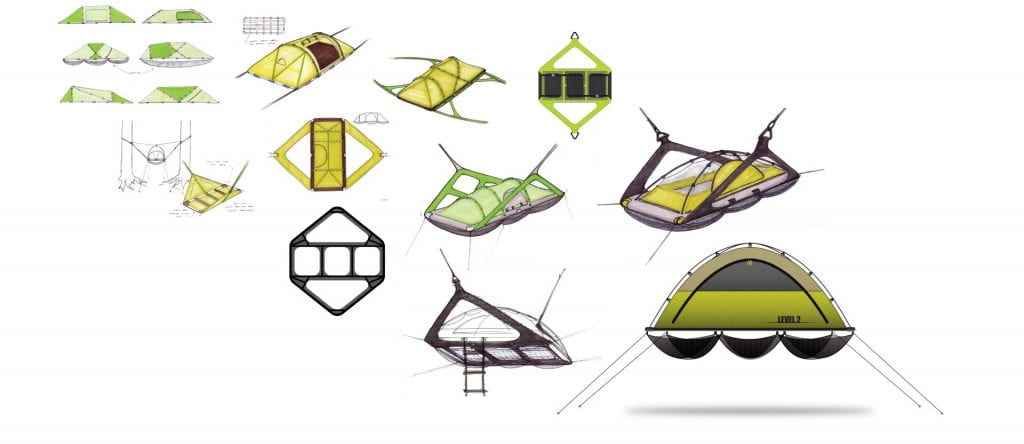
Getting Things off the Ground
Titled “Adventure Studio,” Cascio’s class asked eight seniors to solve challenges related to enhancing the outdoor experience and beyond. Owens became engrossed with the idea of tensile strength, or the resistance of a material to breaking under tension. He also loved the idea of getting a campsite out of the dirt. His suspension tent includes an elevated platform and a traditional dome. All of it attaches to a harness suspended between two trees.
The harness connects to a carbon fiber frame with elastic webbing woven in for structural support. Implementing tensile strength material, tie-down points found in traditional tents would not be necessary. The tent—made of a waterproof, ripstop nylon—is punctuated by netting storage underneath and can be carried in a branded duffel bag.
“Most industrial design projects are handheld, but the scope of this project would have made a small-scale model impossible,” Owens says.
Like other students in the class, he utilized labs and other resources on campus, save for a few 3D-printed pieces that a friend produced. When a prototype was created, Owens applied rigorous testing, literally clawing at the material and dumping water onto it.

A trip to Maine saw the brackets holding the harness fail. “I had an internal breakdown,” he recounts. “I kept thinking there’s something wrong with the project.”
Owens called his friend and classmate to emergency 3D print stronger brackets. They worked the next time.
Owens and friends ultimately took the tent to Cathedral Ledge in New Hampshire for a photo shoot that called for the tent to be suspended on the side of a cliff, an experience Owens calls “the scariest part of the project.”
He is now at a point where he would consider bringing the tent to market after a few more tweaks. Those who have seen the prototype have even asked where the tent can be purchased.
“Derek (Cascio) was great and let us experiment,” he says. “As you get older, Wentworth lets you do more and have more responsibility and freedom. This studio was really the first time that I felt like it was coming from me and I had control over everything.”
***

Running to the Finish Line
Called the “last great race on earth,” the Iditarod is a punishing event that often asks participants to traverse blizzards and gale force winds that can lower the wind chill to minus 100 degrees Fahrenheit. The footwear that racers utilize is critical to staying in the event.
Nassif designed an overshoe—called Aurora—that fits over a boot or other footwear to provide increased warmth and waterproofing. But for Nassif, the shoe also had to be stylish.
To get it right, she spoke with three people who had participated in the race, camped overnight in the snow in Western Massachusetts, and met with a woman who owns a sled dog company. She also met with a shoe designer at the company Vibram.
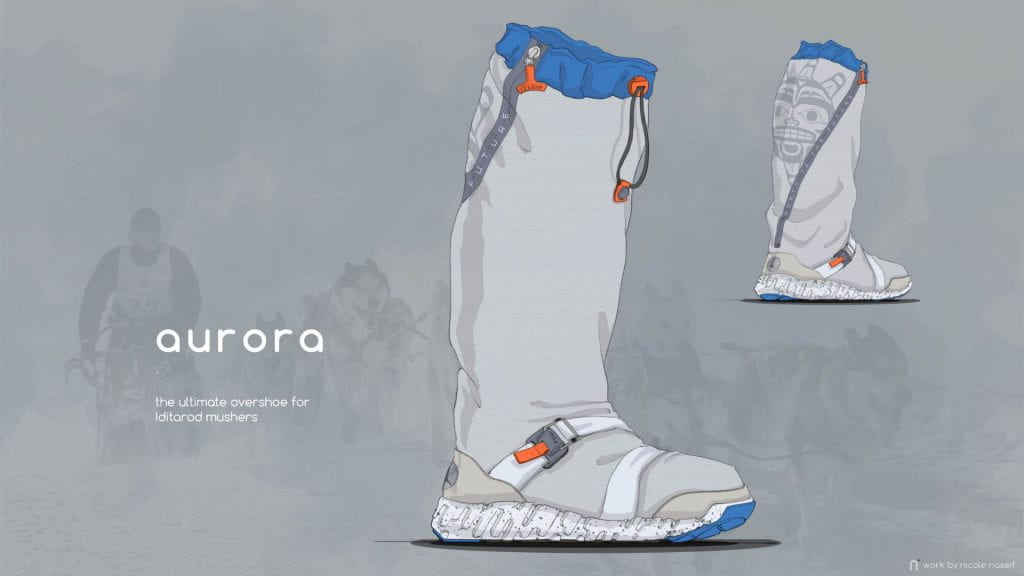
She borrowed a shoe model from studio and started testing different straps in her residence hall. She would design a 17-inch-tall model with a gaiter at the top to seal off body heat and keep snow from entering the boot. The sole is made of a strong PVC material in lieu of traditional rubber, and the upper bottom consists of heavyweight waterproof material that is also coated with a waterproof sealant. A sun design inspired by the Haida Indians adorns the back of Aurora.
“Initially, I didn’t know what I was going to do with this boot,” says Nassif. “I’d never had to design something and then think about how it functions without feeling it physically. To see it come together was extremely gratifying.”
***
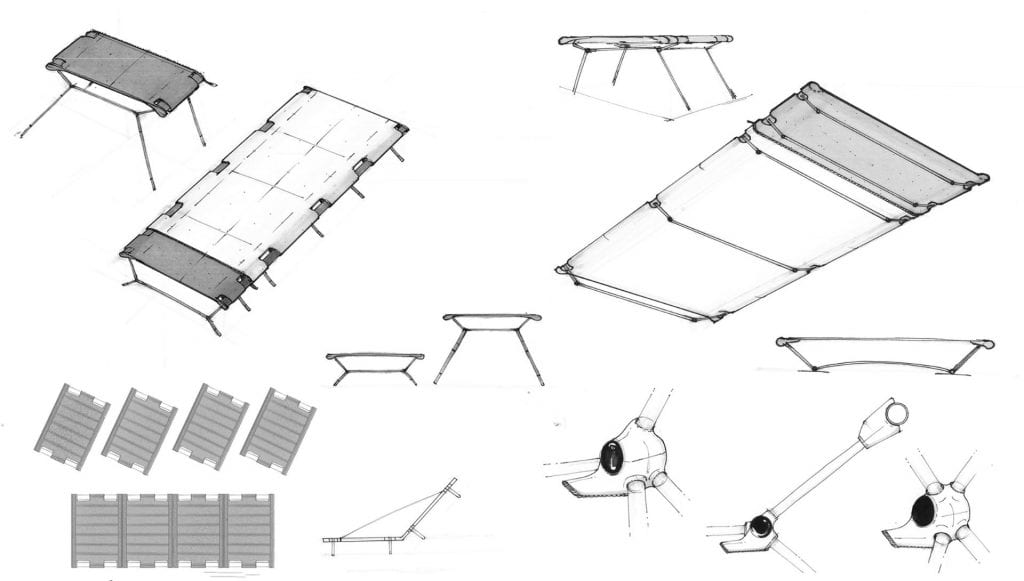
Thinking Lighter
The hellishly cold camping trip that Woessner took found him and his buddies often sitting on ice and frozen logs. One of the campers brought a chair, but it proved heavy to haul during hikes, and the air mattress Woessner attempted to sleep on was numbingly uncomfortable. The experience led to his Base-05 Ultra-Lite Cot.
The cot weighs a total of five pounds with an overall length of 82 inches. The structure is made of carbon fiber with injection molded, glass-filled nylon rod connectors. The cot contains a sewn-in pillow and a detachable stool.
“This type of design had not been done before, so we had to make connectors that were more structurally sound,” he says.
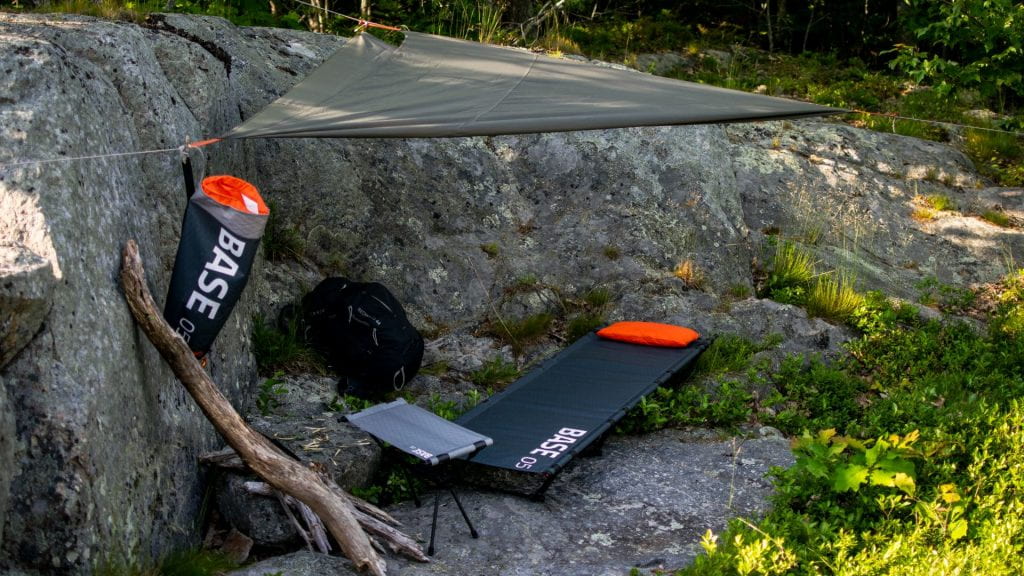
Woessner went through five prototypes, adjusting the geometry each time. The result is a model that features a straightforward setup and one that Woessner hopes to ultimately market to the ultralight community.
Cascio, meanwhile, plans to bring the studio class back in 2020.
“Wentworth has everything you need to make something like this,” he says. “Between the labs and equipment on campus, it’s the biggest treat to be able to make something with what you already have at hand.”

